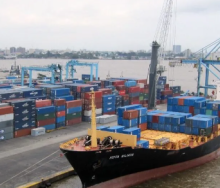The small increase of new vehicle sales in April, after eight consecutive months of depressed movement, experienced a steep dive of 14.2% year-on-year (y-o-y) in May, mainly because of last week’s elections.
Wesbank head of marketing and communication, Lebo Gaoaketse, said: “While the politics will play out during June, the new vehicle market will hopefully be able to display more positivity during the second half of the year.”
However, uncertainty prevails amid the MK Party’s threatening statements, Cosatu’s declaration that it will not accept an ANC-DA coalition, and the prospect of a so-called 'Doomsday' Pact between Jacob Zuma’s party, the EFF, and the ANC.
According to the Automotive Business Council (naamsa) the new vehicles unit market in May declined by 6 137 units.
“The depressed result follows a moment of positivity in April (up 2.2% y-o-y), which in turn had followed eight months of negative growth.
“May sales were 957 units or 2.5% down on April,” according to media monitoring and analysis group Novis.
“There was a direct correlation between applications for vehicle finance and sales volumes for May,” Gaoaketse said.
“Applications for new vehicle finance declined by double digits, while used vehicles maintained a stronger interest, showing the weak demand as consumers and businesses waited for the elections.”
Contrary to recent trends, light commercial vehicle (LCV) sales went down by 19.5% to 10 334 units. The LCV segment has usually outperformed passenger cars but may be challenged by affordability and the proliferation of value-packed entry-level sedans, hatchbacks and crossovers that are currently available.
Passenger car volumes were down 11.6% to 24 367 units although the discrepancy and volatility of these segment fluctuations is more balanced in the year-to-date view.
With the total market 6% slower for the first five months compared to last year, passenger car and LCV sales are down 6.4% and 6.1% respectively.
“Economic conditions remain tough for consumers with limited household budgets,” Gaoaketse said.
“Interest rates have once again been maintained at previous levels. Although the rate remains high, some analyst outlooks indicate that inflation has peaked, which could indicate lower rates during the second half of the year.”
Other positive factors for the next half-year could be spearheaded by the expected reduction in fuel prices this month.
Once people have an idea of the country’s political landscape, more stability can be expected in general market activity which should be mirrored by new vehicle sales. Improved sentiment will also be helped should load-shedding continue to remain at low levels, allowing an overall boost in economic activity.
“First-half sales will certainly look shaky,” Gaoaketse said.
“But we expect more positivity to enter the market during the second half of the year, assisted by improving economic conditions that will hopefully stimulate vehicle sales by increasing spending power.”













